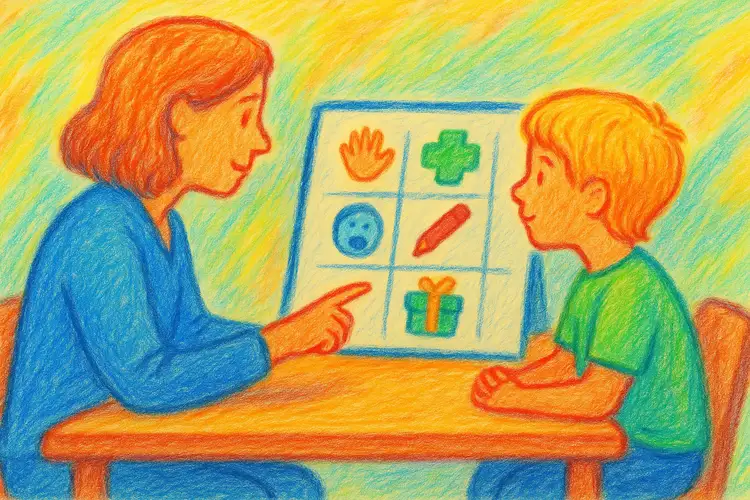Visual Support in Therapy: Strengthening Communication
Published {$created} by Carsten Blum
Therapy sessions — whether occupational, speech, or behavioral — often involve many moving parts: different activities, transitions, and goals.For clients with autism, ADHD, or developmental delays, this can be confusing or even overwhelming.
Visual support helps bring structure and clarity into the therapeutic space.It turns abstract concepts into visible steps, helps clients understand expectations, and ensures consistency across sessions and therapists.

How Visual Support Enhances Therapy
Predictable structure: Sessions follow a visible plan, reducing anxiety.
Clear communication: Pictograms and icons make goals concrete and understandable.
Reinforcement: Visual feedback helps track progress and celebrate success.
Consistency: The same symbols and layouts can be used across sessions or different therapists.
Engagement: Visuals make therapy interactive and enjoyable.
By using visuals, therapists can focus less on constant verbal direction — and more on connection and progress.
Common Visual Tools in Therapy Settings
🗓️ Session schedules
Show the order of planned activities — for example: greeting, warm-up, task, reward, goodbye.
🧠 Task sequences
Step-by-step visuals for exercises, fine motor tasks, or communication drills.
🎯 Goal boards
Visual representations of session objectives, so clients can see what they’re working toward.
🗣️ Communication boards
Icons or images that help nonverbal clients express choices, needs, and emotions.
🌟 Reward or progress trackers
Simple visuals that celebrate small wins and keep motivation high.
How to Introduce Visual Support in Therapy
Start with a simple session plan: A few icons showing the order of activities.
Explain the visuals together: Build understanding before starting the tasks.
Use repetition: Keep symbols and layout consistent across sessions.
Make it interactive: Let the client move or remove icons as tasks are completed.
Adapt and expand: Add more visuals as the client’s understanding grows.
Example: Simple Therapy Session Visual Plan
Step | Symbol | Activity |
|---|---|---|
1 | 👋 | Greeting |
2 | 🧩 | Warm-up game |
3 | 🗣️ | Speech practice |
4 | 🖍️ | Drawing activity |
5 | 🎁 | Reward / feedback |
6 | 👋 | Goodbye |
This kind of plan helps the session stay calm, structured, and predictable — for both therapist and client.
Benefits for Therapists and Clients
Improved communication: Especially for clients with limited verbal skills.
Stronger engagement: Visuals make sessions more interactive and fun.
Consistency across teams: Multiple therapists can use the same visual language.
Data and reflection: Visual records help track what worked and what didn’t.
Reduced stress: Predictable sessions lower anxiety for clients and caregivers alike.
Long-Term Value
When visual tools are used consistently, clients begin to generalize structure beyond therapy sessions.They learn how to manage transitions, understand goals, and anticipate changes in other settings — at home, in school, or in the community.
In other words, visual support in therapy doesn’t just build skills for the session — it builds skills for life.
Summary
Visual tools in therapy make structure visible, goals tangible, and communication accessible.They turn sessions into predictable, collaborative experiences that build trust and lasting progress.
Next step: Try adding a simple visual session plan to your next therapy session — and see how it changes engagement and calmness.